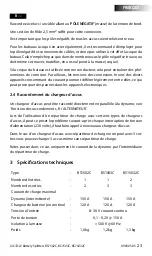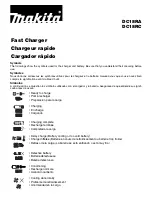
8
090305.05
vetus®
Battery Splitters BS1502C, BS1503C, BS15032C
Contents
1 Introduction . . . . . . . . . . . . . . . . . . 8
2 Installation . . . . . . . . . . . . . . . . . . . 9
3
Technical data . . . . . . . . . . . . . . . . 11
4
Testing and troubleshooting. . . . . . . 12
5
Overall dimensions . . . . . . . . . . . . . 38
6
Wiring diagrams. . . . . . . . . . . . . . . 40
7
Test diagrams . . . . . . . . . . . . . . . . 50
1 Introduction
The Vetus battery splitter provides automatic charge current distribution of the al-
ternator and/or battery charger and load isolation of the batteries.
This is achieved because the diodes allow the current only to flow
from
the alterna-
tor
to
each individual battery and not the other way around. Discharging a higher
charged battery into a lower charged battery is therefore impossible.
By applying a different technology to that universally used for isolator diodes, the
voltage drop of the Vetus battery splitter is significant lower.
In comparison, an isolator diode usually suffers from a voltage drop of 0.7 Volt. This
means that the charging voltage of the batteries will be 0.7 Volt lower than the
output voltage of the alternator. The batteries will never be fully charged with this
lower charging voltage. A battery which is always being charged up to less than
100% will have a very short service life! Compensation of the alternators charging
voltage is required to charge the batteries up to 100%. This required charging volt-
age compensation is with certain alternators not easily achieved.
Compensation for the charging voltage of the alternator, and a battery charger if
installed, is
NOT
required in case of the Vetus battery splitter.
The Vetus battery splitter is suitable for
negative ground
systems and batteries of
the
same nominal voltage
either of 12 Volt or 24 Volt.
1.1 The maximum current
The battery splitter can be used for a continuous current up to a maximum of 150
Amps. Make sure that the maximum total current of alternator and battery charger,
if they supply current simultaneously, does not exceed the maximum specified cur-
rent.
In view of the high currents which may occur over a long period of time take ex-
treme care with both the cables and the connections.









































